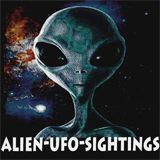Reports of Unidentified Flying Object – The Investigation Begins
After the interviews we realized that the case required urgent follow-up investigation on a priority basis. This prompted John Auchettl and me to go to Adelaide and check out the car firsthand. On January 30 we arrived in Adelaide and did some preliminary work. Three days later John flew in from Melbourne and joined me at Channel 7 TV station for the appointment with Mr. Pangallo, who arranged for us to begin inspection and test of the car.
Dust in sufficient amounts for several laboratory analyses was vacuumed from inside and outside the car, and was also scraped from the brake linings, to compare with samples taken from inside the car.
We found the radio which had malfunctioned during the encounter to be operating satisfactorily. The dents on the roof were found to be just as the family had described: they were very slight with the largest one about the size and depth of an ordinary saucer. Reports of a rack or baggage strapped to the roof were false, as we learned from the family. A story being told both locally and abroad was that the damage was caused by the roof rack and the owner was trying to collect insurance money by telling the story. Philip Klass, America’s foremost UFO debunker, offered that story as an explanation. So much for his methods of scientific investigation-there never was ·a roof rack!
The tire was found to be damaged from a blowout and was ripped all the way around the circumference (see Photos 15 and 16) . The side mirror on the driver’s side was broken, but Sean explained that this happened when they hit a kangaroo while driving in the dark.
Sean had reported that he had been going 200 k.p.h. ( 120 m.p.h.) to escape from under the UFO. The 1984 Ford Telstar, a four-cylinder front-wheel-drive automobile, will not go that fast while on the ground. To check Sean’s story, the wheels were jacked off the ground, and in a test documented by Channel 7 on video, it was shown that the speedometer will register 200 k.p.h. under those conditions .
After some of the tests were televised on the news pro gram on the night of February 1 , we understand that some of the skeptics made adjustments to their earlier comments . The story was being treated seriously again.
On March 20 I left Melbourne for San Francisco, arriving there in time for the Bay Area branch meeting of the Mutual UFO Network at Mountain View, where I gave a set of the samples to Dr. Richard Haines, a scientist from NASA’s Ames Research Center. A few days later Dr. Haines submitted the samples to the ” state-of-the-art” Philips Laboratory. Since this laboratory is one of the most advanced in America, with many people using its facilities, we had to wait our tum.
In a letter from Dr. Haines, dated July 12, 1988, he enclosed a report entitled “Scanning Electron Micro scope Results of Mundrabilla Dust and Other Samples. ” The interior dust was not from the brake system of the car, he reported. This was in direct contradiction to the original findings reported by the analysts in Adelaide. The Philips Laboratory analysis also revealed the presence of ” . . . oxygen, carbon, calcium, silicon , potassium, and others. The analyst found fibers typical of pipe insulation but it is not asbestos. Many of the fibers contained carbon and oxygen only (cellulose fibers) . Atomic element 85 (At; astatine) is also possible in the sample as is a relatively long fiber of NaCl which is unusual. However, NaAt does combine in fiber-like form . . . “
On July 3 I returned to Melbourne. Due to briefings with the VUFORS committee and the necessity of catching up with accumulated correspondence and other matters, I was delayed until July 22 before going to the Nullarbor Plain and other areas in Western Australia. Priority for the trip was due, of course, to the fact that the Knowleses’ experience had emerged as the foremost mystery case of the decade in Australia.
